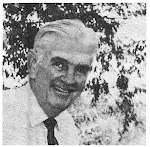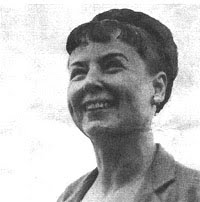New writers are given basic advice to “write what you know.” This was key to Holling Clancy Holling’s career as a writer, illustrator and naturalist. He was first an inquisitive child growing up in rural Michigan and, second, one who learned skills at the hands of his family, relatives, co-workers and Native-American friends. The insights we gain by reading Minn of the Mississippi, Paddle-to-the-Sea and Seabird could only have come from a person who had hands-on knowledge of his environment and 19th century crafts, geography through personal exploration, and trial-and-error skills learned by canoeing and survival camping.
We’re fortunate that Hazel Gibb Hinman spent days interviewing Holling and his wife Lucille in 1957 for her Master’s thesis at the University of Redlands in California. She isolated Holling’s experiences and directly correlated them to his published work. For example, growing up in Michigan, Holling told Hinman, his father Bennett Clancy would point to a rock or boulder, asking, “Do you see the scratches on it? Do you suppose those scratches had anything to do with the glacial period?” Then, Papa Bennett would explain how the glaciers formed, packed the ice and snow, then pushed out and cut into the mountains. “How fast did the glaciers go?” Holling quoted his father. “Well, slowly,” showing with his hands the few inches the glaciers would travel in a year.
As Minn, a snapping turtle, grew to a two-year-old, Holling wrote [p.28, Minn of the Missippi, Houghton Mifflin Company], “Glaciers had spread clay, gravel, and big stones across this northland. Minn found rivers running on boulder beds. She might dig in clay, sand or muck. But she found boulders beneath her. She entered cuts in solid granite and sea-laid stone, ground out by swirling water with gravel and sand.” Papa Bennett’s lessons had been well learned.
Holling worked on board the large ships plying the Great Lakes. Over the years he also became an experienced canoer and wilderness trekker. His familiarity with waterways large and small got him through many scrapes, and they supported his writing in Minn of the Mississippi, Pagoo and Paddle-to-the-Sea. He writes in Minn [p.34], “The next spring she found the River raging. It could cut down bluffs and rebuild them again as islands. Some islands held trees scarred by ice and logs heaved out at them by floods. Floods left trees with their trunks clay-coated ten feet up; drying in neat, level lines of whitewash. Floods left brush in ghostly branches like nests of giant birds.”
Traveling cross-country by trailer in 1937, Holling and his wife Lucille told Hinman, they stopped by the Ohio Mound Builders. Information and sketches concerning the remains, Hinman states, was worked into Minn’s adventures as well [p. 46]. “The ancient Mound Builders, gone for centuries, might not be real to Minn — but now they caused her no end of trouble. In hastily digging out her nest…she kicked up obsidian arrowheads, bits of clay pottery, a carved-stone pipe…. For such treasures any museum director might have given Minn a private pool, fresh meat for a lifetime, unlimited rest and quiet.”
Camping in at Landa Park between Austin and San Antonio allowed Holling to explore New Braunfels, including a section of the Mississippi, a huge spring and a lake. This, too, was added to Minn’s expedition as she neared the end of her journey. A visit to friends in Houma, La., also had afforded the Hollings a guided tour through the bayous.
In 1926, a year after Holling and Lucille Webster were married, they served on an around-the world cruise as artists, teaching passengers as they sailed through the Caribbean en route to Asia. In Panama City, he sketched and explored, writing in the shipboard publication about an underwater treasure chest spilling its contents. This image showed up, writing in 1951, as Minn lived “on a glittering heap — of what? Rich jewels, once more, were merely stones; and one of earth’s heaviest elements — melted neatly into golden wafers of equal weight — was returned once again to the care of earth and water. For Minn, her doorstep of so-called treasure was only a hardness, like water-worn pebbles.” [p. 84]
How does a writer experience an underwater world in the late 1930s before snorkel tubes and scuba tanks? Holling, Hinman, reports, secured some goggles and five feet of garden hose to do his explorations. This was Holling’s “fish-eye view” that he translated into Minn’s world.
Holling was acquisitive in his knowledge and adept at working it later into story line and marginal illustrations. It might be said that Holling’s books reflect a lifetime of learning that has been shared by generations of young readers.









